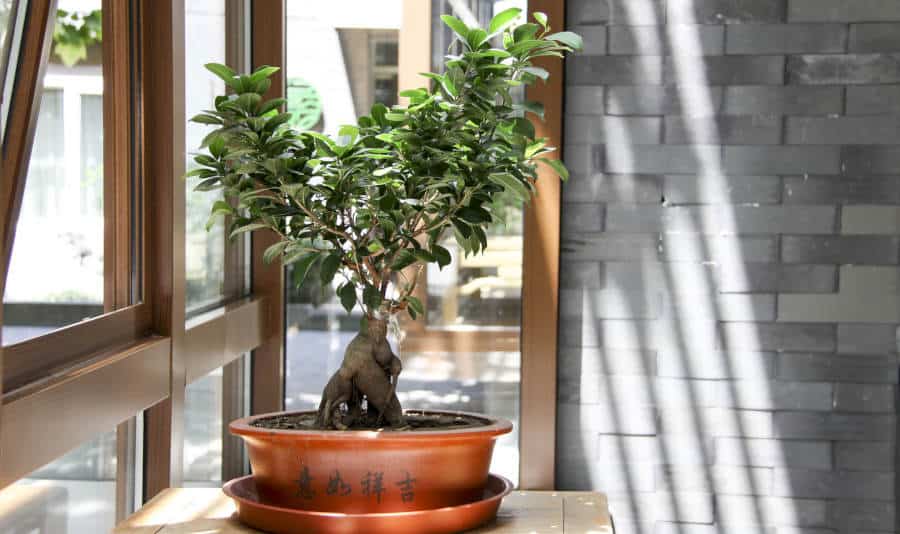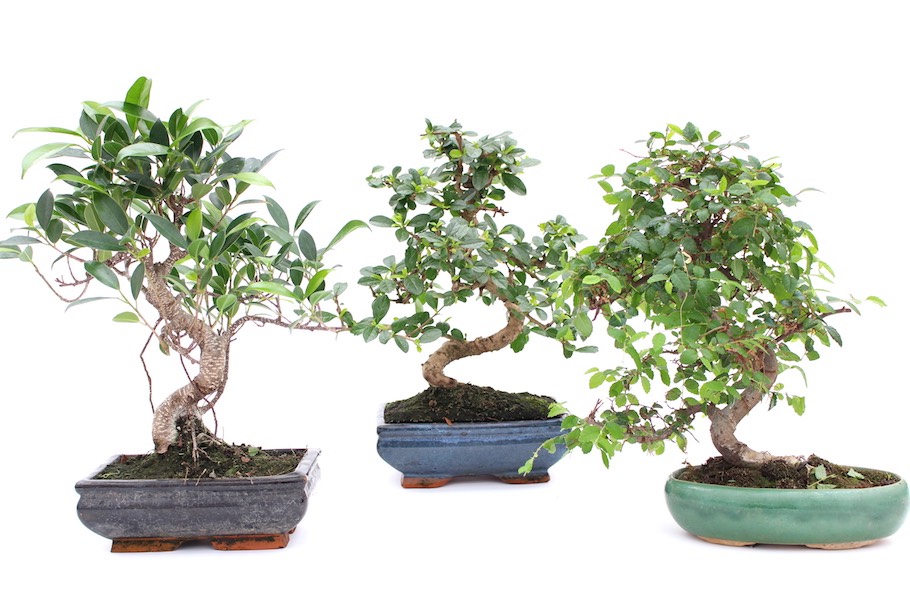Yes, bonsai trees can grow indoors. They require proper care and specific conditions to thrive.
Bonsai trees are miniature versions of larger trees, cultivated for aesthetic and spiritual purposes. Growing bonsai indoors offers a unique way to bring nature into your home. These trees need adequate light, humidity, and proper watering to flourish indoors. Choosing the right species is crucial; some are better suited for indoor environments.
Common indoor bonsai varieties include Ficus, Jade, and Chinese Elm. Regular pruning and maintenance are essential to keep the bonsai healthy and vibrant. With the right care, indoor bonsai can thrive and add a touch of natural beauty to your living space.
Introduction To Indoor Bonsai
Indoor bonsai trees bring nature into your home. They are small, beautiful, and easy to care for. These tiny trees create a peaceful atmosphere. Anyone can enjoy growing bonsai indoors.
What Is Bonsai?
Bonsai is the art of growing miniature trees in small containers. These trees look like full-sized trees but are much smaller. Bonsai trees need special care and attention.
| Aspect | Description |
|---|---|
| Size | Small, usually less than 24 inches tall. |
| Container | Grown in pots or trays. |
| Care | Requires regular watering, pruning, and sunlight. |
History Of Bonsai
The history of bonsai dates back over a thousand years. It started in China and spread to Japan. Bonsai became popular in Japan during the Kamakura period (1185-1333).
In Japan, bonsai is considered an art form. People use it to express creativity and patience. Bonsai trees symbolize harmony and balance.
- China: Origin of the art form.
- Japan: Refinement and popularization.
- Modern Day: Worldwide hobby and art form.
Today, people all over the world grow bonsai. Indoor bonsai trees are especially popular. They fit well in small spaces and bring nature indoors.

Credit: bonsaigenie.com
Choosing The Right Bonsai
Choosing the right bonsai is crucial for indoor growth. Not all bonsai species thrive indoors. Some require more light, humidity, or specific care. Understanding the best species and factors helps ensure a healthy indoor bonsai tree.
Best Species For Indoors
Certain bonsai species are better suited for indoor environments. Here are some of the best species:
- Ficus: This species is hardy and adapts well to indoor conditions.
- Chinese Elm: Known for its lovely foliage and resilience.
- Jade Plant: A succulent with minimal water needs.
- Serissa: Also known as “Tree of a Thousand Stars,” it blooms small white flowers.
- Dwarf Schefflera: Easy to care for and popular among beginners.
Factors To Consider
When choosing an indoor bonsai, consider the following factors:
| Factor | Details |
|---|---|
| Light | Indoor bonsai need bright, indirect sunlight. South-facing windows work best. |
| Humidity | Indoor air is often dry. Use a humidity tray or mist the leaves. |
| Watering | Water when the soil is slightly dry. Avoid overwatering to prevent root rot. |
| Temperature | Keep the temperature stable. Avoid placing near drafts or heat sources. |
| Soil | Use well-draining bonsai soil to prevent waterlogging. |
Choosing the right bonsai and considering these factors ensures your bonsai tree thrives indoors. Happy growing!
Lighting Requirements
Growing bonsai trees indoors can be rewarding. Proper lighting is crucial for their health. Bonsai trees need the right light to thrive. Let’s explore the lighting requirements.
Natural Light
Bonsai trees love natural light. Place them near south-facing windows. This location gets the most sunlight. Ensure the tree gets 5-6 hours of sunlight daily.
Too much direct sunlight can harm some species. Use sheer curtains to filter the light if needed. Rotate the bonsai tree weekly. This ensures even light exposure on all sides.
Artificial Light Options
Sometimes natural light is not enough. Artificial light can help in these situations. Choose full-spectrum grow lights for the best results.
Here are some artificial light options:
- LED Grow Lights: Energy-efficient and long-lasting
- Fluorescent Lights: Affordable and effective
- Incandescent Bulbs: Less efficient, use as a last resort
Place the lights 6-12 inches above the bonsai. Keep the lights on for 12-16 hours daily. Use a timer to automate the light schedule.
With proper lighting, your indoor bonsai tree will flourish. Pay attention to its needs and adjust lighting as necessary.

Credit: www.bonsaiempire.com
Watering Techniques
Watering techniques are crucial for the health of your indoor bonsai tree. Proper watering ensures your bonsai thrives in its indoor environment. Understanding the right watering techniques can prevent common issues like root rot and dehydration.
How Often To Water
Water your indoor bonsai tree when the soil feels slightly dry. Use your finger to test the soil’s moisture level. Insert your finger about one inch into the soil. If the soil feels dry, it’s time to water.
Typically, indoor bonsai trees need watering every 4-7 days. This can vary based on the tree species, pot size, and indoor climate. Always check the soil before watering to avoid overwatering.
Signs Of Overwatering
Overwatering is a common problem for indoor bonsai trees. Signs of overwatering include:
- Yellowing leaves
- Falling leaves
- Soggy soil
- Mold growth
If you notice these signs, reduce your watering frequency. Ensure the pot has proper drainage to prevent water from stagnating.
Proper watering techniques are essential for maintaining a healthy indoor bonsai tree. Monitor your tree’s needs and adjust your watering routine accordingly.
Soil And Fertilization
Caring for bonsai trees indoors requires special attention to soil and fertilization. The right soil mix and proper fertilizing schedule are essential. This helps the tree grow healthy and strong.
Best Soil Mixes
Bonsai trees need well-draining soil. Standard garden soil is too dense. Here are some ideal soil mixes for indoor bonsai:
- Akadama: A type of clay from Japan, excellent for bonsai.
- Pumice: A volcanic rock that retains water but also drains well.
- Lava Rock: Provides good drainage and root aeration.
- Organic Potting Compost: Adds nutrients and helps retain moisture.
Mix these in a ratio of 2:1:1:1 (Akadama, Pumice, Lava Rock, Organic Potting Compost). This blend ensures proper drainage and nutrient availability.
Fertilizing Schedule
Fertilizing your indoor bonsai is crucial. It needs the right nutrients for growth. Follow this schedule:
- Spring: Use a balanced fertilizer every two weeks.
- Summer: Fertilize weekly with a high-nitrogen formula.
- Fall: Switch back to a balanced fertilizer every two weeks.
- Winter: Reduce fertilizing to once a month with a low-nitrogen formula.
Always dilute the fertilizer to half the recommended strength. This prevents over-fertilization, which can harm the tree.
Use a liquid fertilizer for easy application. Granular fertilizers can also be used but must be applied carefully.
Temperature And Humidity
Understanding the right temperature and humidity is crucial for growing bonsai trees indoors. Bonsai trees are delicate and need specific conditions to thrive. Let’s explore the ideal temperature and humidity levels for indoor bonsai trees.
Ideal Temperature Range
Bonsai trees prefer a stable temperature range. The ideal temperature for indoor bonsai trees is between 60°F to 75°F (15°C to 24°C). Ensure the temperature does not fluctuate too much.
During the winter, keep the bonsai away from cold drafts. In summer, avoid placing them near air conditioning vents. Extreme temperatures can damage the bonsai.
| Season | Temperature Range |
|---|---|
| Winter | 60°F to 70°F (15°C to 21°C) |
| Summer | 65°F to 75°F (18°C to 24°C) |
Managing Humidity Levels
Bonsai trees need a certain level of humidity to stay healthy. Indoor environments can often be dry, especially with heating or air conditioning. Aim for a humidity level between 40% and 60%.
- Use a humidity tray under the bonsai pot.
- Place a small water container nearby.
- Mist the bonsai leaves regularly.
These methods help maintain the right humidity. You can also use a humidifier in the room where the bonsai is kept. Keep an eye on the humidity levels with a hygrometer.
Pruning And Shaping
Pruning and shaping are essential for indoor bonsai trees. These practices help bonsai trees maintain their miniaturized size and beautiful form. Regular pruning and careful shaping ensure your bonsai thrives indoors.
Basic Pruning Techniques
Basic pruning involves cutting back new growth. This keeps the tree’s shape and encourages denser foliage. Follow these simple steps:
- Use sharp, clean scissors.
- Cut back new shoots to the first or second leaf.
- Remove any dead or yellow leaves.
Remember to prune regularly. This prevents the tree from becoming too bushy. Pruning also helps light reach all parts of the tree.
Wiring And Shaping
Wiring is a technique used to shape the branches of your bonsai. Follow these steps for effective wiring:
- Choose the right wire size for the branch.
- Wrap the wire around the branch, starting from the base.
- Bend the branch gently to the desired shape.
Keep the wire on for a few months. Then, remove it to avoid scarring. Regular checking is crucial to prevent damage.
| Action | Frequency |
|---|---|
| Basic Pruning | Monthly |
| Wiring | Every 3-6 months |
With these techniques, your indoor bonsai will stay healthy and beautiful. Regular pruning and careful wiring ensure the best growth and shape. Happy gardening!
:max_bytes(150000):strip_icc()/ML_Grow_Bonsai-8-2000-54d3d1a7424b4359b44e52383f40b834.jpg)
Credit: www.midwestliving.com
Common Problems And Solutions
Growing bonsai trees indoors can be rewarding. Yet, it comes with challenges. Knowing common problems and their solutions helps in maintaining healthy trees.
Pests And Diseases
Bonsai trees are prone to pests and diseases. Aphids, spider mites, and scale insects are common pests. They suck the sap from the leaves, causing damage.
- Aphids: Tiny, soft-bodied insects. They cluster on new growth.
- Spider mites: Very small, create fine webs on leaves.
- Scale insects: Hard, shell-like coverings, stick to stems and leaves.
To manage pests:
- Inspect your tree regularly.
- Use insecticidal soap or neem oil.
- Isolate infected trees to prevent spread.
Fungal diseases can also affect bonsai trees. Powdery mildew and root rot are common.
- Powdery mildew: White, powdery spots on leaves.
- Root rot: Caused by overwatering, roots turn mushy and black.
To prevent fungal diseases:
- Ensure proper air circulation.
- Water only when soil is dry.
- Use a well-draining soil mix.
Troubleshooting Growth Issues
Bonsai trees may face growth problems. These can stem from light, water, and soil issues.
Light Issues:
- Insufficient light: Causes weak and leggy growth.
- Too much direct sunlight: Can scorch leaves.
Solution:
- Place your bonsai near a south-facing window.
- Use grow lights for additional light.
- Ensure some shade during peak sunlight hours.
Watering Issues:
- Overwatering: Leads to root rot.
- Underwatering: Causes leaves to wilt and fall.
Solution:
- Water only when the topsoil is dry.
- Check soil moisture daily.
- Use a pot with drainage holes.
Soil Issues:
- Poor soil drainage: Causes waterlogging and root rot.
- Nutrient deficiency: Leads to yellow leaves and poor growth.
Solution:
- Use a well-draining bonsai soil mix.
- Fertilize regularly with balanced bonsai fertilizer.
- Repot every two years to refresh soil.
Conclusion
Growing bonsai trees indoors is a rewarding experience. These miniature trees add beauty to any space. With proper care, they thrive inside homes. Ensure they get enough light and humidity. Remember to water and prune them regularly. Enjoy the tranquility and elegance bonsai trees bring to your indoor environment.

